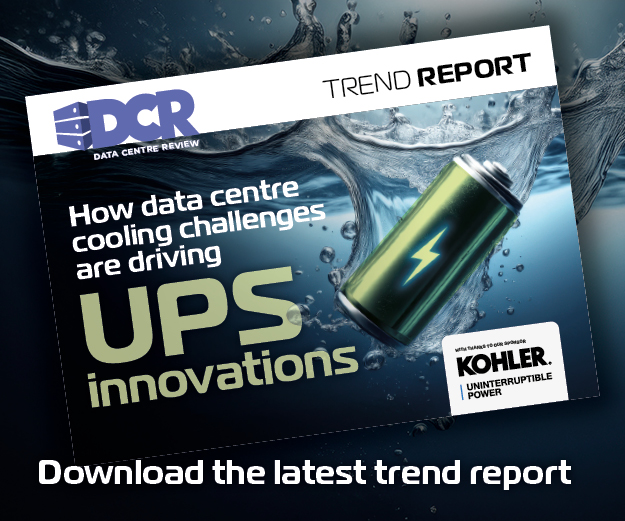With a host of challenges facing the European data centre market – most notably, the dangers posed to ensuring constant uptime – Greger Ruud, Data Centre Specialist for Aggreko Nordics, discusses the importance of strategic thinking and long-term planning.
Skyrocketing data usage, wide-scale investment, and steady international integration have all contributed to the burgeoning growth of the European data centre sector. However, in a market rocked by strained national power grids, volatile energy pricing, degraded supply chains and the industry’s high energy consumption, challenges to the industry’s sustained success are becoming more apparent.
While the demand for data storage is expected to continue growing, the associated difficulties with staying online are also beginning to do so. As this young sector reaches adolescence, long-term planning to navigate its development is thereby becoming increasingly essential to further facilitate the data centre boom.
Optimising uptime
It is fundamental that facilities have the critical energy infrastructure to stay operational. Compromising this can prove very expensive – a recent Uptime Institute report found the latest outage for 25% of data centres cost more than £1 million.
Additionally, as organisations expect energy providers to be capable of providing uninterrupted power all the time, unplanned downtime can have consequences for the perceived reliability of an entire data centre portfolio.
The upcoming challenges
Downtime is a risk faced by every data centre and one that requires extensive contingency planning. That said, turbulent market conditions and commercial pressures are giving rise to a host of issues facility and supply chain stakeholders must also address.
While data centres have not been exempted from wider economic pressures, demand meant that providers were often well-placed to absorb the shock. Rising and increasingly volatile energy prices across Europe have become an issue for data centres, which are not afforded the luxury of reducing consumption during peak periods. These facilities are therefore subject to extortionate prices, with FTI Consulting noting that facilities are seeing a significant deterioration in bottom-line metrics.
Fortunately, constant energy pricing agreements have insulated some facilities from these market forces. However, substantial energy use is also putting immense pressure on national grid infrastructures across the world, which are experiencing ever-common difficulties. Indeed, an Aggreko-commissioned survey found grid limitation was among one of the main causes of power outages at their facility for 60% of European data centre consultants. Given the sector’s expectation to remain online more than 99% of the time, this is giving rise to calls for new forms of energy procurement.
Moreover, sites supporting key markets around metropolitan areas are facing growing public scrutiny of their energy usage during construction and when operational – not only due to the strain being placed on the national grid, but the associated carbon emissions.
Given the wider discussions surrounding net zero, heightened energy demand has coincided with growing calls to decarbonise, especially in areas such as ultra-low emission zones. Despite this, the sector at-large is unprepared for more stringent sustainability practices expected in the coming years – for instance, despite 63% of operators believing their region’s authorities will require them to publicly report carbon emissions data in the next five years, just 37% of operators currently do so.
Energy resilience
A culmination of external pressures and rapid developments in the sector has meant that weaknesses in infrastructure are leaving sites vulnerable to outages – the old saying that ‘a chain is no stronger than its weakest link’ rings truer than ever when it comes to data centre uptime.
For instance, Gizmodo has warned that a number of major technology companies are unprepared for the disruption intense heat can cause on cooling infrastructure, and that many are lacking sufficient redundancy in the event of system failure. The case for serious contingency preparedness coinciding with comprehensive long-term planning has therefore never been stronger.
Operators investing in sufficient infrastructure to mitigate these challenges has in turn placed excessive pressures on an increasingly stretched supply chain – Turner & Townsend’s Data Centre Cost Index 2022 indicated that lead times for many pieces of major equipment have been extended by 12 weeks or more. This illustrates the importance of comprehensive planning for data centres to navigate through the progressively tumultuous terrain.
Contingency planning and procurement
Supply constraints exacerbated by wider energy-associated challenges are contributing to a perfect storm of factors that could threaten data centre uptime. It is with this in mind that experts are calling on operators to adopt a temporary procurement approach to their long-term power. By partnering with temporary suppliers, data centres can gain access to essential technologies and sidestep long supply chain delays associated with procuring permanent utility solutions.
Moreover, expert suppliers can assess risks and create a contingency plan while providing solutions engineered to overcome the complexities of these individual projects. This strategy ultimately relies on a proactive approach to optimising data centre uptime, while incorporating long-term procurement flexibility to navigate the sectors unpredictable future. Advanced monitoring, combined heat and power (CHP) solutions and loadbank testing all offer viable approaches to mitigating the challenges to energy resilience data centres face.
The developing needs of the data centre sector has left operators in a flux and unsure whether immediate energy solutions will simply fuel trouble down the line. This is giving rise to the need for a review of long-term power procurement strategies designed for dynamism and resilience.
A temporary procurement strategy combined with an innovative approach to sustainable solutions will ultimately help data centres take on the challenges of today and meet the future with confidence.



